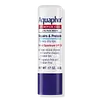What's inside
What's inside
 Key Ingredients
Key Ingredients

 Benefits
Benefits

 Concerns
Concerns

No concerns
 Ingredients Side-by-side
Ingredients Side-by-side

Ricinus Communis Seed Oil
MaskingCaprylic/Capric Triglyceride
MaskingButyrospermum Parkii Oil
EmollientGlycerin
HumectantTrihydroxystearin
Skin ConditioningWater
Skin ConditioningCetyl Palmitate
EmollientButylene Glycol
HumectantJojoba Esters
EmollientXylose
HumectantSimmondsia Chinensis Seed Oil
EmollientHelianthus Annuus Seed Wax
Skin ConditioningPentylene Glycol
Skin ConditioningSqualane
EmollientSodium Polyglutamate
HumectantPentaerythrityl Tetra-Di-T-Butyl Hydroxyhydrocinnamate
AntioxidantPongamia Glabra Seed Oil
Skin ConditioningSodium Hyaluronate
HumectantPolyglycerin-3
HumectantAcacia Decurrens Flower Wax
EmollientMannitol
HumectantRhamnose
HumectantXylitol
HumectantAcetyl Dipeptide-1 Cetyl Ester
Skin ConditioningFructooligosaccharides
HumectantTocopherol
AntioxidantRicinus Communis Seed Oil, Caprylic/Capric Triglyceride, Butyrospermum Parkii Oil, Glycerin, Trihydroxystearin, Water, Cetyl Palmitate, Butylene Glycol, Jojoba Esters, Xylose, Simmondsia Chinensis Seed Oil, Helianthus Annuus Seed Wax, Pentylene Glycol, Squalane, Sodium Polyglutamate, Pentaerythrityl Tetra-Di-T-Butyl Hydroxyhydrocinnamate, Pongamia Glabra Seed Oil, Sodium Hyaluronate, Polyglycerin-3, Acacia Decurrens Flower Wax, Mannitol, Rhamnose, Xylitol, Acetyl Dipeptide-1 Cetyl Ester, Fructooligosaccharides, Tocopherol
Butyl Methoxydibenzoylmethane 3%
UV AbsorberHomosalate 9%
Skin ConditioningEthylhexyl Salicylate 4.5%
UV AbsorberOctocrylene 9%
UV AbsorberOctyldodecanol
EmollientRicinus Communis Seed Oil
MaskingBeeswax
Emulsion StabilisingBis-Diglyceryl Polyacyladipate-2
EmollientButyrospermum Parkii Butter
Skin ConditioningHydrogenated Castor Oil
EmollientHelianthus Annuus Seed Wax
Skin ConditioningCetearyl Alcohol
EmollientDimethicone
EmollientSimmondsia Chinensis Seed Oil
EmollientCopernicia Cerifera Wax
Tocopheryl Acetate
AntioxidantAscorbyl Palmitate
AntioxidantHelianthus Annuus Seed Oil
EmollientTocopherol
AntioxidantButyl Methoxydibenzoylmethane 3%, Homosalate 9%, Ethylhexyl Salicylate 4.5%, Octocrylene 9%, Octyldodecanol, Ricinus Communis Seed Oil, Beeswax, Bis-Diglyceryl Polyacyladipate-2, Butyrospermum Parkii Butter, Hydrogenated Castor Oil, Helianthus Annuus Seed Wax, Cetearyl Alcohol, Dimethicone, Simmondsia Chinensis Seed Oil, Copernicia Cerifera Wax, Tocopheryl Acetate, Ascorbyl Palmitate, Helianthus Annuus Seed Oil, Tocopherol
 Reviews
Reviews

Ingredients Explained
These ingredients are found in both products.
Ingredients higher up in an ingredient list are typically present in a larger amount.
Helianthus Annuus Seed Wax is created from the common sunflower.
Sunflower seed wax is made up of long chain non-glyceride esters, a small amount of fatty alcohols, and fatty acids.
This ingredient is often used to enhance the texture of products. The fatty acid properties also help hydrate the skin.
Learn more about Helianthus Annuus Seed WaxRicinus Communis Seed Oil is the INCI name for castor oil.
Castor Oil helps moisturize the skin. It is rich in a fatty acid called ricinoleic acid. This fatty acid helps prevent moisture loss on the skin. This helps keep your skin soft and hydrated. Ricinoleic acid also has anti-inflammatory and pain reducing properties.
Besides hydrating the skin, castor oil is also used to hydrate hair. By keeping the hair shaft moisturized, breakage is decreased. More studies are needed to show castor oil's effective on stimulating hair growth.
Castor oil is created by cold-pressing castor seeds and then purifying the oil with heat. It was used in Ancient Egypt as fuel in lamps and to help treat eye irritation.
The term 'fragrance' is not regulated in many countries. In many cases, it is up to the brand to define this term. For instance, many brands choose to label themselves as "fragrance-free" because they are not using synthetic fragrances. However, their products may still contain ingredients such as essential oils that are considered a fragrance.
Learn more about Ricinus Communis Seed OilThis oil comes from the seeds of the desert shrub called Jojoba. It is more commonly known as jojoba oil, a non-comedogenic oil.
Jojoba oil does not contain fragrance and has many fatty-acids, making it a great soothing ingredient.
It also contains Vitamin E, a great moisturizing ingredient. Vitamin E is also an antioxidant and protects your skin against oxidative damage.
This ingredient humectant properties, meaning it helps draw moisture from the air. This helps keep your skin hydrated.
While jojoba has antibacterial properties, it is only able to kill some strains of bacteria.
Studies also show it helps in wound healing. In fact, Indigenous cultures have used jojoba as a moisturizer and to help treat burns for centuries.
Fun fact: Jojoba oil similar to natural human skin sebum, so it has a great effect on dry skin. It is also promising with helping to regulate sebum production.
Due to its fatty acid content, Jojoba oil may not be fungal acne safe. We recommend speaking with a professional if you have any concerns.
Learn more about Simmondsia Chinensis Seed OilTocopherol (also known as Vitamin E) is a common antioxidant used to help protect the skin from free-radicals and strengthen the skin barrier. It's also fat soluble - this means our skin is great at absorbing it.
Vitamin E also helps keep your natural skin lipids healthy. Your lipid skin barrier naturally consists of lipids, ceramides, and fatty acids. Vitamin E offers extra protection for your skin’s lipid barrier, keeping your skin healthy and nourished.
Another benefit is a bit of UV protection. Vitamin E helps reduce the damage caused by UVB rays. (It should not replace your sunscreen). Combining it with Vitamin C can decrease sunburned cells and hyperpigmentation after UV exposure.
You might have noticed Vitamin E + C often paired together. This is because it is great at stabilizing Vitamin C. Using the two together helps increase the effectiveness of both ingredients.
There are often claims that Vitamin E can reduce/prevent scarring, but these claims haven't been confirmed by scientific research.
Learn more about Tocopherol